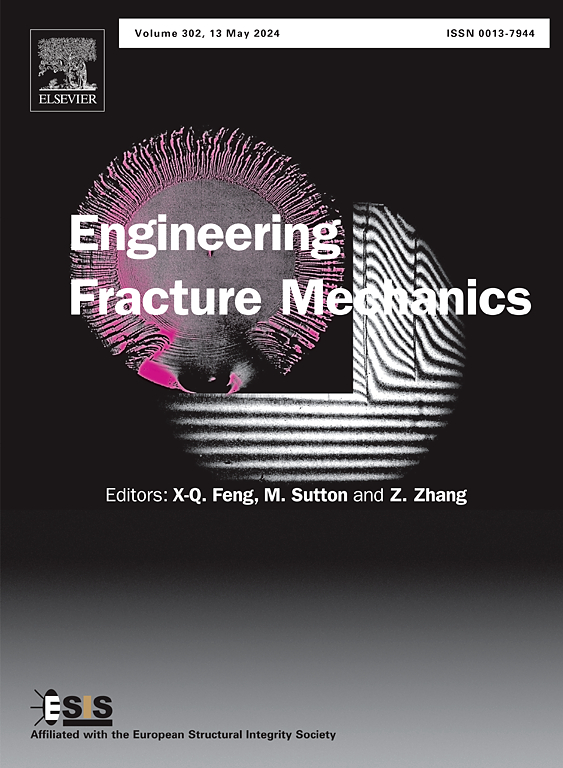A correlation between unified constraint parameter and J-R curves of different metallic materials
IF 4.7
2区 工程技术
Q1 MECHANICS
引用次数: 0
Abstract
To enhance the safety of service and the economic efficiency of operation and maintenance of cracked structures in structural integrity assessment, it is essential to investigate and establish the general correlation of constraint-dependent J-R curves for different metallic materials. This research makes use of a large number of J-R curves data of different metallic materials. These data are predominantly measured or simulated from SEN(B) specimens with different geometries and sizes (representing various constraint levels). Additionally, the research utilizes the load-independent unified constraint parameter Ad* data calculated for each specimen through the finite element method. Based on these data, a general correlation equation of constraint-dependent J-R curves for different metallic materials has been established. This general correlation equation can predict constraint-dependent J-R curves for components or structures with varying levels of constraint and different metallic materials, and its predictive capability and accuracy have been validated using experimental and simulated J-R curves data of different homogeneous materials and welded joint materials. This general correlation equation can provide a simple and convenient approach to predicting and estimating constraint-dependent J-R curves, significantly lowering both experimental and computational costs, and has a broad application range for metallic materials, loading modes, geometries and crack sizes.
在结构完整性评估中,为了提高开裂结构的使用安全性和运行维护的经济效益,有必要研究和建立不同金属材料的约束相关 J-R 曲线的一般相关性。这项研究利用了大量不同金属材料的 J-R 曲线数据。这些数据主要是从具有不同几何形状和尺寸(代表不同约束水平)的 SEN(B) 试样中测量或模拟出来的。此外,研究还利用了通过有限元方法为每个试样计算的与载荷无关的统一约束参数 Ad* 数据。根据这些数据,建立了不同金属材料的约束相关 J-R 曲线的一般相关方程。这个通用相关方程可以预测不同约束水平和不同金属材料的部件或结构的约束相关 J-R 曲线,其预测能力和准确性已通过不同均质材料和焊接接头材料的实验和模拟 J-R 曲线数据得到验证。该通用相关方程为预测和估算与约束相关的 J-R 曲线提供了一种简单方便的方法,大大降低了实验和计算成本,在金属材料、加载模式、几何形状和裂缝尺寸方面具有广泛的应用范围。
本文章由计算机程序翻译,如有差异,请以英文原文为准。
求助全文
约1分钟内获得全文
求助全文
来源期刊
CiteScore
8.70
自引率
13.00%
发文量
606
审稿时长
74 days
期刊介绍:
EFM covers a broad range of topics in fracture mechanics to be of interest and use to both researchers and practitioners. Contributions are welcome which address the fracture behavior of conventional engineering material systems as well as newly emerging material systems. Contributions on developments in the areas of mechanics and materials science strongly related to fracture mechanics are also welcome. Papers on fatigue are welcome if they treat the fatigue process using the methods of fracture mechanics.

 求助内容:
求助内容: 应助结果提醒方式:
应助结果提醒方式:


